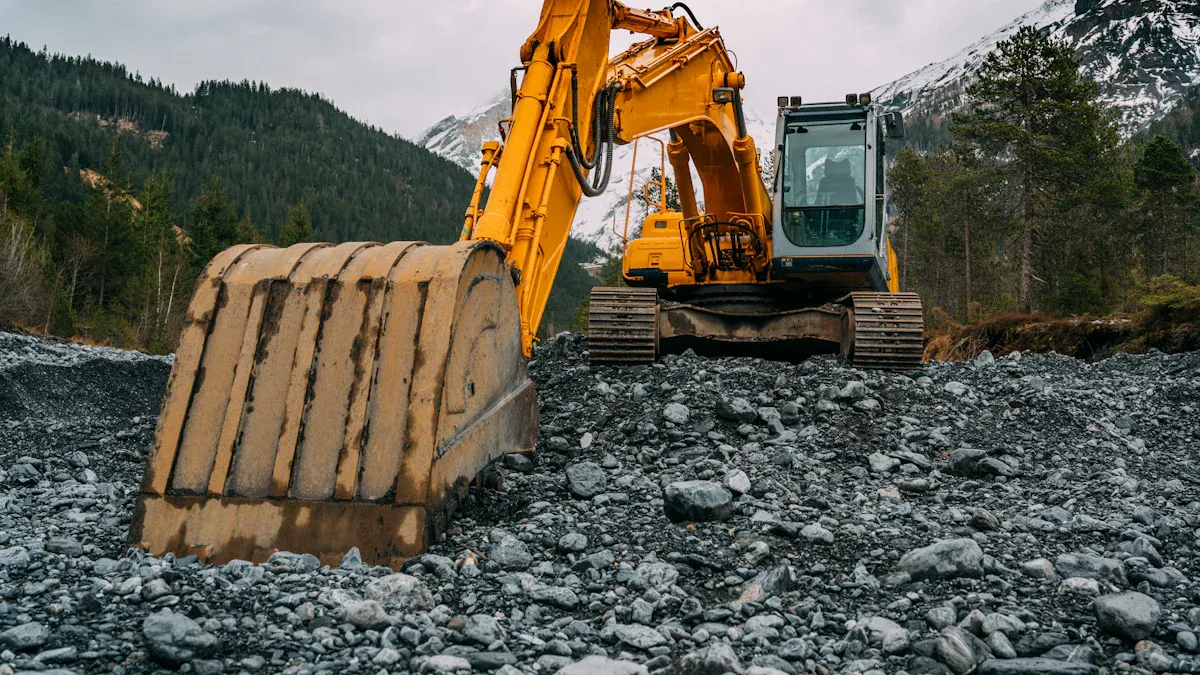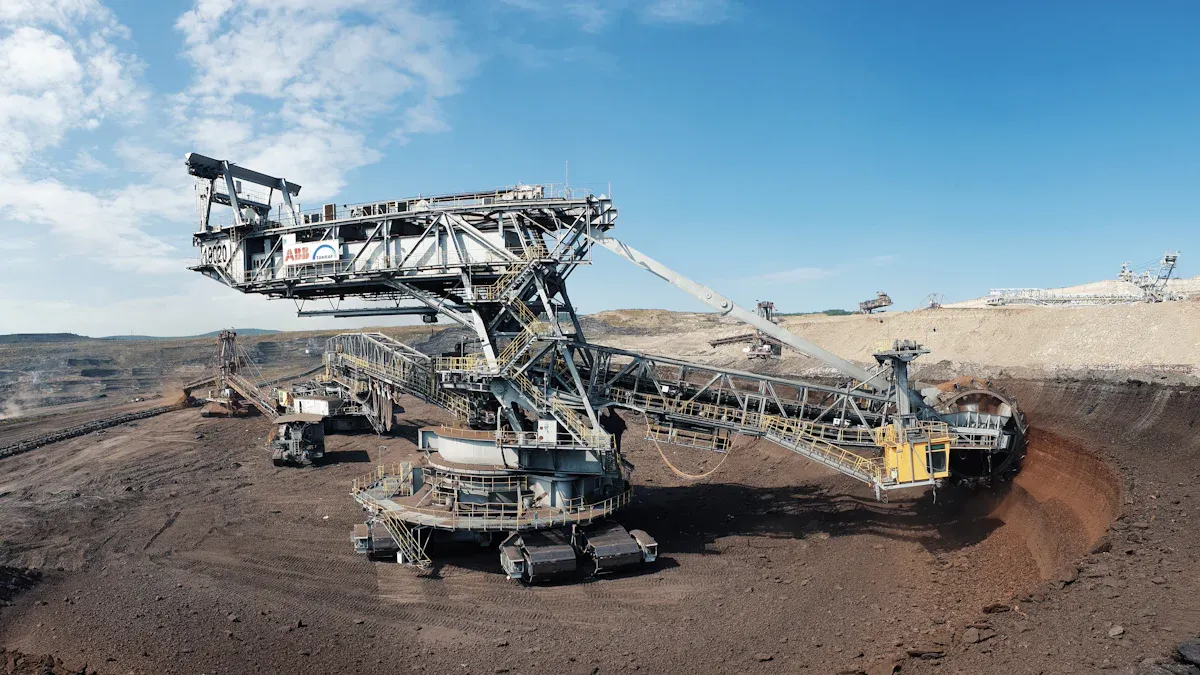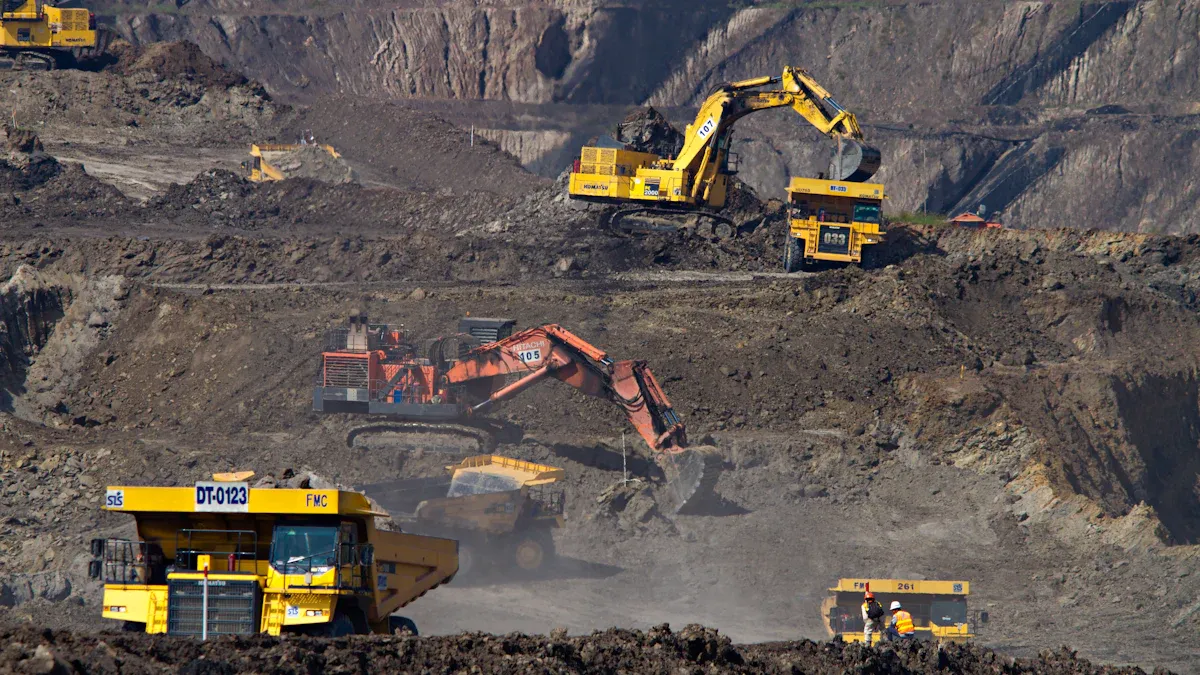
Ground engaging tools play a vital role in construction and mining. These wear parts, including segment bolt and nut, track bolt and nut, and plow bolt and nut, attach to equipment and directly contact tough materials. Their advanced designs boost durability, reduce downtime, and improve efficiency in demanding environments.
Key Takeaways
- Ground engaging tools protect heavy equipment and help machines dig, cut, and move tough materials efficiently.
- Using high-quality tools reduces maintenance, extends machine life, and boosts productivity on construction and mining sites.
- Regular inspection and timely replacement of these tools keep operations safe, reliable, and cost-effective.
Ground Engaging Tools: Definition, Role, and Importance

What Are Ground Engaging Tools?
Ground engaging tools are essential components in heavy equipment used for construction and mining. These parts make direct contact with soil, rock, or other materials during operation. They serve as the first line of defense against wear and damage. Common examples include bucket teeth, adapters, cutting edges, end bits, ripper shanks, and grader blades. These tools attach to machines such as excavators, bulldozers, loaders, and graders. Their main job is to break, move, or shape the ground while protecting the main structure of the equipment.
Note: Ground engaging tools must withstand heavy workloads and harsh conditions. Manufacturers like Ningbo Digtech (YH) Machinery Co.,Ltd. use advanced steel alloys and treatments to ensure these tools last longer and perform better.
How Ground Engaging Tools Work in Construction and Mining
Ground engaging tools operate based on several mechanical principles. Hydraulic cylinders in the equipment generate digging forces. These forces act at the tool’s tip to overcome soil resistance. The design of the bucket or blade helps manage these forces and improves productivity. The interaction between the tool and the ground involves penetration, separation, and escape. Soil type, density, and cohesiveness affect how much force is needed.
| Mechanical Principle | Description |
|---|---|
| Hydraulic Cylinders | Generate digging forces for breaking and moving material. |
| Digging Forces | Must exceed soil resistance to avoid failure. |
| Resistive Forces | Include gravity, soil resistance, and remolding force. |
| Bucket Design | Optimized shapes reduce resistance and boost efficiency. |
| Soil-Tool Interaction | Involves steps like penetration and separation, guided by industry standards. |
Manufacturers select materials like alloy steel and cast steel for these tools. Advanced treatments, such as austempered ductile iron, increase hardness and resistance to abrasion. This ensures the tools can handle tough jobs without wearing out quickly.
Importance of Ground Engaging Tools for Equipment and Operations
Using the right ground engaging tools brings many benefits to construction and mining operations. High-quality tools protect equipment from excessive wear and damage. This reduces the need for frequent repairs and extends the life of expensive machinery. When tools last longer, machines spend more time working and less time in the shop. This leads to better productivity and lower maintenance costs.
- High-quality ground engaging tools optimize bucket performance and protect equipment.
- Longer wear life means less maintenance and more production time.
- Optimized tools help machines handle more material with less effort, reducing energy use.
- Scheduled replacements and predictive maintenance lower the risk of unplanned downtime.
- Proper tool management improves worker safety and operational reliability.
Regular inspections and timely replacement of worn tools prevent accidents and equipment failures. Well-maintained tools reduce hazards like slips, trips, and falls. Operators experience smoother, safer operations with less fatigue.
Ningbo Digtech (YH) Machinery Co.,Ltd. provides ground engaging tools designed for durability and safety. Their products help companies avoid costly downtime and maintain high standards of operational safety.
Types of Ground Engaging Tools and Their Applications

Bucket Teeth and Adapters
Bucket teeth and adapters play a crucial role in digging and loading operations. Bucket teeth engage directly with soil, rock, or other materials, making excavation easier and more efficient. Adapters secure the teeth to the bucket lip, transmitting digging forces and absorbing impacts. This setup protects the bucket from direct wear and allows for quick tooth replacement, reducing downtime. Operators can choose from pin-on, weld-on, or hammerless adapters, each designed for specific working conditions. Proper matching of teeth and adapters ensures optimal digging performance and tool longevity.
Tip: Regular inspection and timely replacement of bucket teeth and adapters help maintain high productivity and prevent equipment damage.
Cutting Edges and End Bits
Cutting edges and end bits attach to the front of blades and buckets on dozers, graders, and loaders. These components cut into the ground, improving penetration and material flow. Manufacturers use materials like high-speed steel, carbide, and heat-treated alloys to increase hardness and wear resistance. Cutting edges come in various shapes and thicknesses to suit different soil conditions. End bits protect the blade corners, extending the life of expensive components. Operators often rotate or flip reversible edges to ensure even wear and maximize service life.
| Ground Engaging Tool Type | Typical Applications in Construction and Mining Projects |
|---|---|
| Cutting Edges and End Bits | Protect buckets and blades on dozers, loaders, excavators, motor graders; suited for abrasive materials like sand and gravel |
Ripper Shanks and Tips
Ripper shanks and tips break up hard ground, rock, or compacted materials. The choice of material, such as alloy steel with specialized heat treatment, affects penetration efficiency and wear resistance. Short tips work best in extreme digging conditions, while long tips suit abrasive but less demanding environments. Proper selection and maintenance of ripper shanks and tips help reduce breakage, minimize downtime, and maintain high productivity in mining and construction.
Blades and Edges for Dozers and Graders
Dozer blades and grader edges differ in design and application. Dozer blades are thicker and built for heavy material pushing, while grader blades are thinner and used for fine grading and smoothing surfaces. High-quality, heat-treated steel increases durability and wear resistance. Advanced blade designs improve grading accuracy and reduce fuel consumption by lowering the effort needed for precise material movement.
| Feature | Dozer Cutting Edge | Grader Blade |
|---|---|---|
| Primary Use | Heavy material pushing and earthmoving | Surface grading, shaping, and smoothing |
| Thickness | Thicker (up to 2.5 inches or more) | Thinner (1 to 1.5 inches) |
| Material Hardness | High abrasion resistance, impact-tough | Moderate wear resistance |
Wear Plates and Protection Systems
Wear plates and protection systems shield machinery from abrasion and impact. These sacrificial layers absorb damage, protecting buckets, hoppers, and other components. Wear plates extend equipment life, reduce maintenance frequency, and lower costs. They are easy to install and replace, making them a cost-effective solution for harsh environments. Protection systems like side bars and edge protectors further enhance durability and safety.
Using the right ground engaging tools for each application ensures equipment runs efficiently, lasts longer, and requires less maintenance.
Ground engaging tools protect machines, boost productivity, and extend equipment life. Operators choose from bucket teeth, cutting edges, ripper shanks, and wear plates. Selecting the right tool improves efficiency, reduces downtime, and lowers costs. Regular inspection and proper maintenance help maximize performance and ensure safe, reliable operations.
FAQ
What is the main purpose of ground engaging tools?
Ground engaging tools help machines dig, cut, and move soil or rock. They protect equipment from damage and improve work efficiency.
How often should operators replace ground engaging tools?
Operators should inspect tools regularly. Replace them when they show signs of wear, cracks, or reduced performance. Regular checks help prevent equipment failure.
Can ground engaging tools fit different types of machines?
Manufacturers design ground engaging tools for many machines. Operators can find tools for excavators, loaders, dozers, and graders. Always check compatibility before installation.
Post time: Jul-14-2025